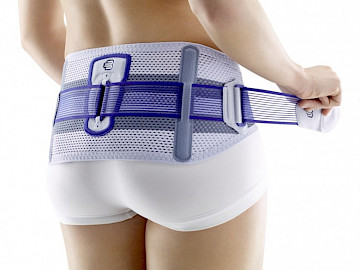Know About Knee Braces to Heal Damaged Knees
Knee injuries can be extremely painful. You are unable to walk or work without discomfort and they take ages to heal properly. Constant knee pain can take the fun out of every single activity.
Even worse, knee pain does not come with only old age. It can occur from unexpected injury, accident or health disorders following bone or muscle damage. If your doctor recommends physical therapy to increase strength and movement, a knee brace is a helpful support that you may want to consider.
Why Should You Embrace Knee Braces?
Just like braces support improperly set teeth, helping them align to improve functionality, knee braces can help support and stabilize improperly aligned joints after dislocation. A brace helps keep the kneecap or patella in place to make simple activities like walking or running easier. If you’ve had a fracture, knee surgery (meniscus repair) or an anterior cruciate ligament repair (ACL), a knee brace offers support to stabilize the area.
Knee pain does not come with only old age
Types of Knee Braces
- Knee Immobilizer: Like its name, this brace immobilizes the knee, stopping it from moving much to give it time to heal. The brace is a long cloth with metal support struts and velcro straps. It is effective for keeping the knee straight and keep damaged bones and muscles in place to hasten healing. You can use it for upper shin bone or knee fractures; after ligament or tendon injury or to recuperate after knee surgery. Unlike a plaster cast, knee braces can be removed to allow flexing for blood circulation.
- Bledsoe Brace: This brace is commonly recommended after knee or ACL surgery to stabilize the knee. The straps wrap around the thigh and shin area, supported by metal brackets on the inside and outside parts that lock the knee to keep it straight. You can unlock to bend the knee for a certain time, as advised by your doctor. As the area heals, the locking mechanism can be altered to allow the knee to bend more as it heals.
- Patella Control Brace: This is like a sleeve worn over the knee. It helps to keep the patella in place during activities like walking, running or sitting. It helps to heal the kneecap after dislocation, provides support for arthritis, patellofemoral stress syndrome, or chondromalacia patella (CMP).
- Motion Control Brace: This is useful for healing sprained or overstretched ligaments on the side of your knee. The brace is a neoprene sleeve with metal support to help sprained or overstretched ligaments heal. It is often prescribed for athletes.
Pros and Cons of Wearing Knee Braces
There are wavering views on knee braces. Some say it limits the mobility of your kneecap which causes the muscles and tendons to weaken with lack of use. So when you are not wearing it, your knee does not regain strength. If you are unable to walk well without support, you might trip and hurt yourself again.
Knee braces need to be comfortable. When they are not, they can lead to skin irritation, poor fit and lack of pain relief. However, if you have injured your knee or need support for healing after damage, knee braces provide support to increase functionality or further injury,
Orthopedic Footcare
For well-fitted knee braces to provide comfortable support for maximum benefit, talk to your doctor or physical therapist. Contact Orthopedic Footcare when you need one. We specialize in making you feel better with customized healing tools from knee braces to compression socks and stockings, specialized shoes and other items to get you on your feet as early as possible.




